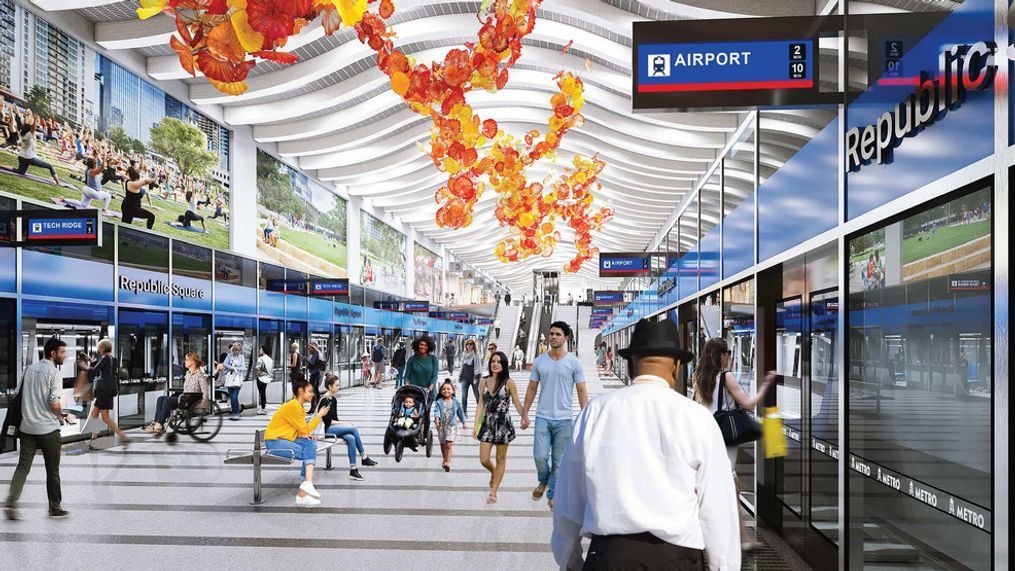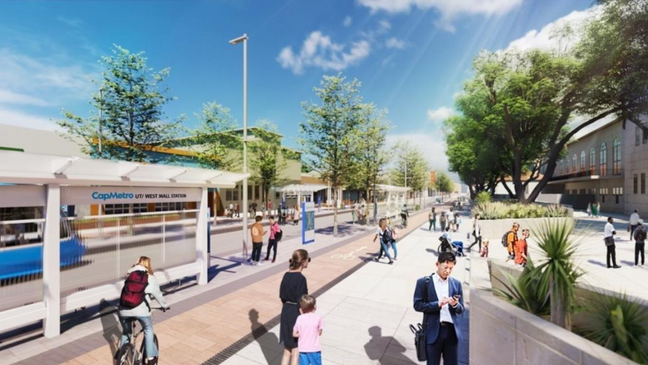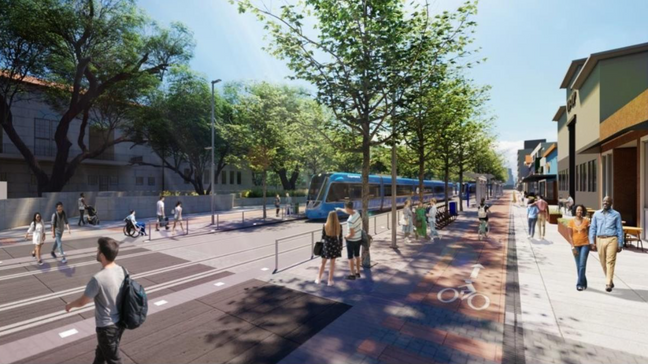Light rail project on The Drag includes options with, without car traffic
AUSTIN, Texas — A light rail is coming to The Drag near the University of Texas at Austin's campus. This is a part of Project Connect which will build a 20-mile rail line transit system to ease congestion in the area. The Project Connect team is asking for the community's feedback.
Over the years The Drag on Guadalupe Street has been a major hub for vehicle traffic but now engineers are looking to make some changes.
“We think that there is a terrific opportunity not to just move people more quickly throughout the city but also to enhance The Drag as a destination for residents and visitors from around the entire community,” Chief of Architecture and Urban Design with the Austin Transit Partnership, Peter Mullan said.
Leaders with Project Connect are looking to get feedback on how best to use the width of the street when they have a train running down the middle of it.
“One has a lane in each direction either for buses only or for general traffic and so that’s an option that we’ll develop. And then one is what we call the Transit Mall where it will be pedestrian dedicated with bike lanes and street trees," Mullan said.
Features of Option A:
- Includes one bus/traffic lane in each direction
- This will mean narrower sidewalks and fewer trees in many areas
- General traffic lanes may create slowdowns for all traffic in the area
- No separated bike lanes
- Bus-to-rail transfers may be more direct
Features of Option B:
- Transit Mall – no traffic lanes or dedicated bus lanes
- Possible that buses may share LRT guideway
- Wider sidewalks, more trees, more places to gather
- Separated bike lanes
- Bus-to-rail transfers may be less direct – must walk 1-2 blocks in some areas
RELATED: Capital Metro prepared to go after infrastructure bill funds when signed by Biden
UT students are on board with the rail line, but most will have graduated by the time it's done.
“If it were here that would be greatly useful for say going to the airport, going to south Austin, or even just going downtown,” UT student, Kenneth Perry said.
Some are concerned with the option B design that has no traffic lanes. Students are worried the traffic will flow into residential areas.
“West Campus is a very busy and tight area, lots of one-way streets so I’m worried that cars might make that more congested,” UT student, Donovan Meade said.
Mullan said the current traffic patterns aren't sustainable as the city continues to grow. He knows ditching the car might be a hard sell.
“If we can design a really well-designed system that’s easy to use, that’s beautiful, and pleasurable to use that will help to encourage people to use it,” Mullan said.
Leaders believe the light rail will be a huge enhancement to businesses to make The Drag a destination for the community. Some property owners on Guadalupe Street who attended the workshop claimed they haven't heard anything from those working on the project.
“We’ve done outreach to all of the businesses on the entire alignment. Sometimes we haven’t connected with them individually and that’s a process and we’re doing that. As you can imagine there are a lot of business owners along the 20-mile lengths of the Orange Line,” Mullan said.
The project could take 8-10 years to complete.
For more upcoming Project Connect workshops, click here.


